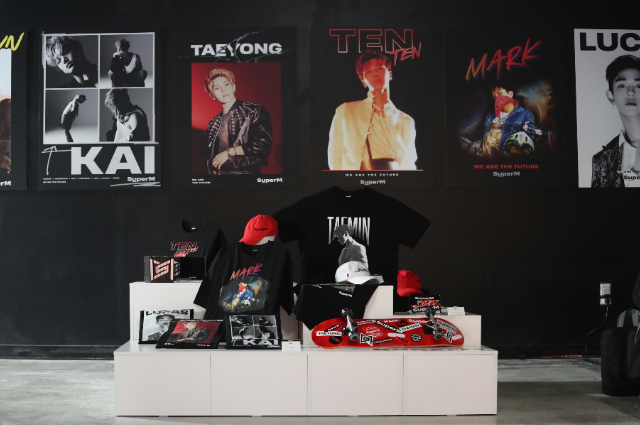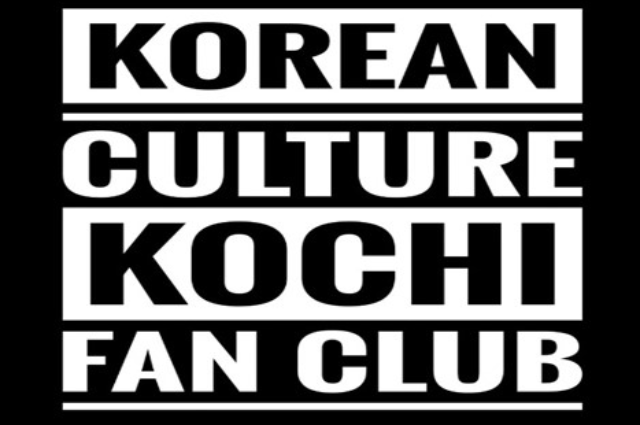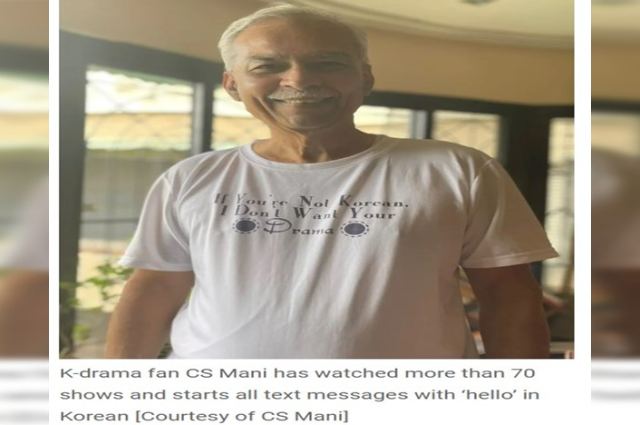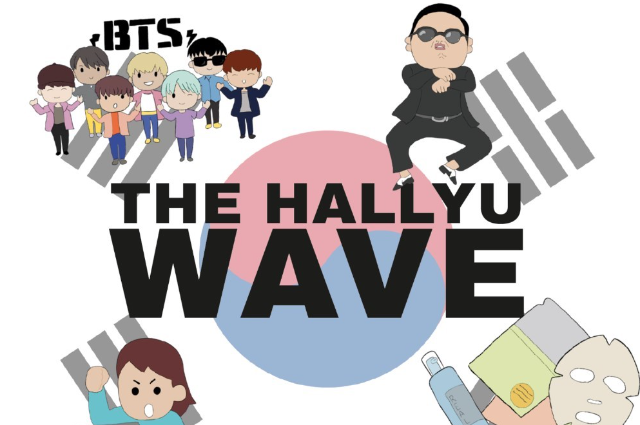
Photo by Joel Muniz on Unsplash
Abstract: The emergence of cultural radical egalitarianism coincides with the era of commercialization, alongside a parallel phenomenon of cultural hybridization. The Korean wave, or Hallyu, exemplifies this fusion, blending Korean traditions with Western influences. Through dramas and films, Korean society showcases its ability to modernize while retaining its traditional essence. This cultural integration poses a challenge to regions like India's North East, where the Korean wave is gaining traction as an alternative form of modernism. In India's North East, there's a noticeable rise in interest, particularly among the youth, in Korean dramas, movies, and fashion, catalyzing a newfound enthusiasm for the region. The allure lies in the sense of familiarity and the proximity to cultural traditions depicted in these Korean productions. This burgeoning fascination further emphasizes the cultural disparities between the North East and mainstream India, making it difficult for residents to identify with the broader Indian culture. Unlike the Korean wave, which enjoys widespread popularity, Indian culture and contemporary expressions aren't as pervasive. The attractiveness of the Korean wave is bolstered by various factors including the quality of actors, beauty standards, fashion trends, narrative realism, and consistency, all of which contribute to its acceptance among both the populace and authorities.
Introduction:
As technology advances and new media platforms emerge, the role of media in our lives continues to evolve, offering not only information but also entertainment and relaxation from the pressures of daily life. Media encompasses various forms of communication, including social media, the internet, newspapers, radio, and television, through which information is shared. One notable phenomenon in the global media landscape is the spread of cultural influences from one nation to another, facilitated by the entertainment function of media, which includes films, television dramas, and music.
South Korea stands out as a nation that has successfully promoted its culture worldwide, giving rise to what is commonly referred to as the Korean wave or Hallyu. This term encompasses not only Korean popular culture but also related industries such as tourism, beauty products, literature, cuisine, technology, and fashion. While the term "Korean wave" originated from the surge in popularity of South Korean movies, sitcoms, and pop music in the mid-1990s, it has since expanded to encompass a wide range of cultural exports.
Today, Korean popular culture, particularly K-dramas, K-pop music, and K-movies, has gained immense popularity globally, often surpassing Western entertainment in certain markets. Social media platforms like Facebook, Twitter, and YouTube have played a crucial role in amplifying the reach of Korean pop culture, with fan communities forming around popular K-pop groups like BTS and BLACKPINK.
The emergence of Korean pop culture was initially perceived as an Asian trend but has since transcended geographical boundaries, becoming a transnational phenomenon. What began as the export of high-quality television dramas, or K-dramas, has expanded to include various cultural products, including music, movies, animation, and games. The proliferation of Korean restaurants, cosmetic shops, and language classes worldwide further attests to the global spread of Korean content, facilitated by online platforms and fan communities.
Unlike its early beginnings in the 1980s, where Korean information was primarily disseminated through traditional media, today's Korean wave benefits from the accessibility of production tools, allowing audiences to create and share their original entertainment content. Through its expanding public sphere, Hallyu serves as a compelling example of how Korean media and popular culture are disseminated and embraced on a global scale.
Expansion of Fan Communities

IMAGE CREDIT: INSTAGRAM ACCOUNT OF koreancultureindiafanclub
With a shared passion for stars, actors, dramas, and pop groups, fan communities have proliferated both online and offline. These communities represent a significant segment of the audience, actively supporting their favorite performers and celebrities, thereby amplifying the visibility of Korean pop culture. The study of cosplay communities, which often revolve around Korean cultural icons, has become a compelling area of research.
Fan groups typically coalesce around common interests in specific pop artists, dramas, celebrities, or phenomena. These virtual communities foster camaraderie, social cohesion, and a sense of belonging among members from diverse backgrounds. Engaging with these fan communities often leads foreign enthusiasts to embrace aspects of Korean culture, sometimes resulting in what is colloquially termed as becoming a Koreaboo—someone enamored with Korean culture.
Interestingly, studies indicate that fans of Korean culture often belong to minority groups and are subject to ridicule. However, these fans serve as cultural ambassadors, disseminating knowledge about Korean culture within their own communities. In India, for instance, there are numerous fan clubs dedicated to Korean celebrities, punk bands, and actors, operating both online and offline to share information and celebrate their idols.
Digital media platforms play a pivotal role in facilitating communication and interaction within these fan communities. Fans can follow official pages and accounts on platforms like Facebook to stay updated on their favorite celebrities and engage with fellow enthusiasts. Social media also serves as a platform for fans to showcase their talents through fan art, video covers, choreography, reaction videos, and blogs, further strengthening the sense of community.
Regardless of geographical boundaries or cultural disparities, digital networks enable fans from around the world to connect and participate in the global phenomenon of Korean pop culture. Notably, groups like BTS have played a significant role in elevating the visibility of the entire Korean pop culture industry through their expansive and dedicated fan base.
Korean Culture in India:

IMAGE CREDIT: www.aljazeera.com
Since its inception in the late 1990s, extensive research has been conducted on the phenomenon of Korean culture, particularly focusing on viewers' reception across diverse cultures. Reimeingam (2014) argues that the spread of Korean cultural products influences various nations and communities in unique ways, eliciting varied reactions from audiences of different ethnic backgrounds. For example, a study on Japanese and Chinese viewers' reactions to historical Korean TV dramas found that while Japanese viewers experienced nostalgia, Chinese audiences saw it as an opportunity to learn about both Korean and Chinese cultures (Messaris, 2016).
Despite fluctuations in individuals' exposure to and consumption of Korean media content, scholars remain intrigued by the widespread appeal and impact of Korean culture. Many researchers are interested in understanding the unique ability of Korean pop culture to promote a wide range of goods, as well as the changing consumer behaviors and demographics influenced by advancements in technology and new media.
In India, the introduction of Korean culture began in Manipur in the early 2000s, where Korean dramas and films became popular due to restrictions on Bollywood content and the availability of Hindi channels. The accessibility of cheap pirated Korean CDs in local markets further fueled the consumption of Korean media in Manipur and neighboring states (Kuotsu, 2013).
To promote the Korean wave in India, the Korean government took significant steps, including the establishment of the Korean Culture Center in New Delhi in 2012. The center has played a vital role in showcasing Korean culture through exhibitions, offering Korean language classes, monitoring the popularity of Korean dramas, and organizing K-pop festivals. The first K-pop festival in India, hosted by the Korean Culture Center, saw significant participation despite its modest beginnings (Gogoi, 2017).
The introduction of streaming platforms like Netflix in India has also contributed to the popularity of Korean dramas. Initially, there was limited interest among the Indian population to subscribe to paid entertainment services. However, with the introduction of user-friendly and cost-effective subscription plans, including free trial periods, Netflix witnessed a substantial increase in Indian subscribers, with Korean dramas being among the most demanded content in 2020.
Globalization and Cultural Hybridity:
Until the mid-19th century, Korea remained a largely closed society under the Chosun monarchy, resisting external influence, particularly from the West. However, mounting pressure from Western European countries and Japan forced Korea to open its doors to the outside world. With the weakening of the monarchy, Western cultures began to penetrate Korea, facilitated by Western evangelists and Japanese influence.
The process of cultural hybridization, influenced by both local and international actors, has played a significant role in shaping Korean culture. In the realm of popular culture, globalization has led to the emergence of a hybridized form that retains its unique characteristics within a global context. Scholars like Kim and Ryoo (2007) argue that the Korean wave represents a blending of Western, Eastern, and Asian modernity, resulting in a trans-hybrid culture. This phenomenon is further reinforced by the concept of "glocalization," where local audiences adapt and contextualize international media to suit their cultural and social needs.
The Korean wave, encompassing Korean dramas, films, music, and fashion, is a product of cultural fusion aimed at preserving native cultural values while embracing modernity. By blending elements of tradition with contemporary ethics, the Korean wave not only defends against cultural imperialism but also promotes cultural diversity and assertion worldwide. This process of cultural amalgamation ensures that the essence of Korean tradition remains intact while being packaged and framed to appeal to global media and entertainment industries.
In essence, the Korean wave represents a harmonious blend of modernization and tradition, neither wholly adopted nor strictly Korean. It transcends national boundaries and is embraced both within and beyond Korea, making it both commercially viable and culturally significant. Despite its global appeal, the Korean wave retains its connection to Korean heritage, making it a symbol of cultural pride and artistic innovation.
Impact of Korean Wave:

IMAGE CREDIT: https://nickledanddimed.com
The emergence of the Korean wave has significantly elevated Korea's global profile, introducing the nation to audiences worldwide who previously had little knowledge of Korea. The Korean wave has sparked widespread interest in Korean culture, leading to increased awareness, language study, adoption of Korean products, and the solidification of Korea's international reputation.
While India's response to the Korean wave has been less pronounced compared to other Asian countries, the Korean government's efforts, along with initiatives like the Korean Culture Center in India (KCCI), have contributed to its impact in the country. Unlike Bollywood and Hollywood, Korean dramas and movies are seen as fresh content by audiences in Northeastern India. The localization of Korean content, including translations and screening in regional languages, has been well-received, fostering a positive reception among viewers.
The appeal of Korean media lies in its ability to blend contemporary, international cultural elements with traditional values, resonating with audiences across diverse cultures. Young people in regions like Manipur, often referred to as "Mini Korea," are particularly influenced by Korean popular culture, emulating the fashion, hairstyles, and language of their favorite celebrities.
With the proliferation of internet usage in India, the influence of Korean pop culture has intensified, reaching a broader audience through social media, YouTube, OTT platforms, and streaming services like Netflix and Amazon Prime Video. The popularity of K-dramas, movies, and K-pop music has surged, especially during the COVID-19 pandemic, as people turned to entertainment for solace and distraction.
The allure of Korean pop culture can be attributed to its diverse range of genres, captivating choreography, engaging plots, and charismatic performances, reflecting Korea's vibrant creative scene and multicultural influences. Overall, the Korean wave has not only enriched India's cultural landscape but also strengthened cultural ties between the two nations, showcasing the power of cultural exchange and globalization.
Conclusion:
Korea's global prominence is undeniable, as it has successfully exported a diverse array of cultural products, including dramas, pop music, cinema, video games, cartoons, and webtoons, earning recognition worldwide. The exportation of Korean dramas in the late 1990s marked the beginning of Korea's cultural expansion, followed by the export of pop music and movies. While Korean culture's success in India has been somewhat slower compared to Eastern and Southeast Asian nations, it remains a significant subject of study in Hallyu scholarship.
The increasing popularity of the Korean wave among young people highlights the phenomenon of cultural infiltration following the modernization process. This trend reflects a shift in preferences driven by factors such as the inability to relate to traditional Indian entertainment, adolescent curiosity, the information revolution, and globalization. Interestingly, factors like the attractiveness of actors and fashion sense also contribute to the appeal of Korean media.
Attempting to shield communities from cultural change and global trends is not a sustainable approach to ensuring their well-being. The Korean wave serves as a reminder that cultural incursions are inevitable and can be embraced positively without compromising cultural values. Koreans have successfully maintained their cultural identity while embracing global influences, contributing to the expansion of the Korean wave.
Mindlessly embracing globalization without regard for cultural identity is not the solution. Instead, adaptation should be approached thoughtfully to achieve positive change while preserving individuality in the face of globalization. The lesson learned from Korea's experience with the Korean wave is that cultural exchange can be mutually beneficial when approached with respect for cultural values and a commitment to preserving identity.
. . .
References:
- Dhawan, R. K. (2017). Korea’s cultural diplomacy: An analysis of the Hallyu in India. Strategic Analysis, 41(6), 559–570. Retrieved from https://doi.org/10.1080/09700161.2017.1377895
- Gogoi, M. (2017, October 25). K-drama to K-pop: Is India finally warming up to the Korean wave? Hindustan Times. Retrieved from https://www.hindustantimes.com
- Kim, E. M., & Ryoo, J. W. (2007). South Korean culture goes Global: K-Pop and the Korean Wave. Korean Social Science Journal, 34(1), 117–152.
- Kshetrimayum, O., & Chanu, N. V. (2008). Mapping cultural diffusion: A case study of ‘Korean wave’ (Hallyu) in Northeast India. In S. Narsimhan & D. Y. Kim (Eds.), India and Korea: Bridging the gaps (pp.181–195). Manak Publications.
- Kuotsu, N. (2013). Architectures of pirate film cultures: Encounters with Korean Wave in “Northeast” India. Inter-Asia Cultural Studies, 14(4), 579–599. Retrieved from https://doi.org/10.1080/14649373.2013.831196
- Lee, S. J. (2011). The Korean wave: The Seoul of Asia. The Elon Journal of Undergraduate in Communication, 2(1), 85-118.
- Lyan, I., & Levkowitz, A. (2015). Consuming the other: Israeli Hallyu case study. In S. Lee & A. M. Nornes (Eds.), Hallyu 2.0: The Korean Wave in the age of social media (pp.
- 212–228). The University of Michigan Press.
- Messaris, P. (2016). The global impact of South Korean popular culture: Hallyu unbound. Asian Journal of Communication, 26(2), 194–197. Retrieved from https://doi.org/10.1080
- Ravina, M. (2009). Introduction: Conceptualizing the Korean wave. Southeast Review of Asian Studies, 31, 3–9.
- Reimeingam, M. (2014). Korean wave and Korean media consumption in Manipur. Journal of Northeast India Studies, 4(2), 15–30.
- Robertson, R. (1994). Globalization or glocalisation? Journal of International Communication, 1(1), 33–52. Retrieved from https://doi.org/10.1080/13216597.1994.9751780
- Shim DB (2011). Waxing the Korean Wave. Asian Research Institute, Working Paper Series #. 158.
- Shim, D. (2006). Hybridity and the rise of Korean popular culture in Asia. Media, Culture & Society, 28(1), 25–44. Retrieved from https://doi.org/10.1177/0163443706059278
- Trish (2014, July 27). International K-pop fans: Mind and Seoul International Kpop Fans:
- Mind and Seoul | l'expérience et de la recherche (wordpress.com)
- Yook, E. L., Yum, Y., & Kim, S. J. (2014). The effects of Hallyu (Korean wave) in Korean transnationals in the U.S.. Asian Communication Research, 3(9), 5-21.
